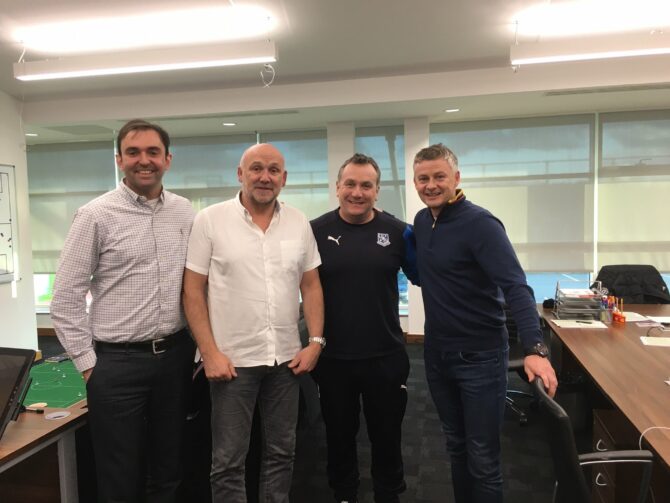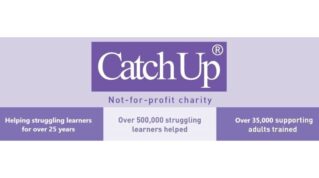Regardless of whether you are taking over a new leadership role or looking to develop an existing one, this piece will detail the steps that will help you start from an informed, confident and strategic place. You will hear from Phil Denton, CEO of Evaluate-Ed & author of The First 100 Days: Lesson from Football Bosses. It will help you map out how you can attack the new calendar year.
Phil Denton developed his knowledge of best practice in this area through his own experiences of being a Headteacher, Deputy, Assistant, Year Lead and Head of Department. He enhanced this understanding by working with football managers who have had successful 100 days in the English Premier League. He has also worked with successful manager Micky Mellon and spoke with business leaders from the world of accounts, travel and industry. All of this experience and these lessons will be condensed and shared with you at regular intervals to provoke thought, reflection and action.
Evaluate-Ed is an online platform for Headteacher’s & CEO’s which allows you to efficiently create an intuitive SEF and live SIP. You will also be able to extract detailed reviews in Ofsted prep, safeguarding, Catholic School Inpsection/SIAMS and more. From EYFS to Sixth Form, this platform is for you. Follow this series and take a free trial to see how you can improve your school and everyone in it through an informed and strategic approach. Click here for your free trial.
Step 1: Establish Your Visionary Purpose
Your purpose as a department, school, college or collection of institutions should be central to all you do, both operationally and strategically. Where to start in establishing a meaningful purpose that resonates with your team ,pupils and community can be challenging. It is easy to fall into the traps of cliché statements, forgotten mission statements or simply thinking that what you do is why you do it.
A great start to your thinking on this matter can be the work of Simon Sinek. Sinek’s book, ‘Start with Why’, is really well captured in his seminal TED talk which has had millions of views. His simple ‘Golden Circle’ can help you and your team focus on why you do what you do. This might relate to social justice, religious calling or simply making the world a better place. Whatever it is, it needs discussion and effective articulation that is as easily communicated to an eight-year-old as it is to a board of trustees. I would really recommend you start your vision work with why and working out from there.
When you consider ‘how’, this should take into account your core values as an organisation. Values can be part of a philosophy, but they must be a lived reality in the way that everyone is expected to treat each other across your school. Whether that is teachers greeting every class as they arrive, leaders being mental health ambassadors or reward systems that celebrate kindness, your systems and process should reinforce the values of your team and institution in a consistent manner.
Finally, your ‘why’ and ‘how’ must lead to a ‘what’ which is purposeful and focussed. If your ‘why’ is social mobility then your ‘what’ should be strong outcomes, a broad futures programme and links with employers.
The stronger your ‘why’ to ‘how’ to ‘what’ threads, the better chance you give your team of achieving their goals, which in turn offers your pupils the best education you can provide.
So, start with ‘why’, reach into the core of your institution and the individuals within it. This is also not forgetting our earlier blog around starting points. Refer back to the STARS model and remember to consider how your ‘how’ and ‘what’ will be influenced in the short term by the starting point your team finds itself in.
Reflections
- Why does your school exist?
- What makes your school distinct when compared with the schools around you?
- Ideally, what behaviours would your pupils display?
- How can these be translated into a set of values?
- To your why, using your how methods, what will you need to do practically?

Step 2: Knowing Your People
The biggest variable, resource and responsibility we have as school leaders is people. People include our pupils, our community, our networks and our team. Understanding your people can help you to rationalise your approach to the key priorities that you will have for improving your team’s performance.
We can be drawn to those real enthusiasts for change or growth and be frustrated by those who appear reticent or as obstacles to progress. As a leader, I know I have been guilty of this. The truth is that to be at our most effective, our role is not to judge their motivation but to harness their potential and find a way to maximise their impact in school.
With that in mind, we’ll look at motivation, innovation and alignment. Beginning with motivation, we will use Dan Pink’s three key elements, referenced in his book, ‘Drive’. Pink does not talk about performance-related pay; instead, he talks about offering people mastery, autonomy, and purpose.
Get an understanding of the factors that are affecting your teams through the Evaluate-Ed sections around staff wellbeing, morale and working practices. You can even use our template wellbeing questionnaire to get a unique understanding of the motivation in your school.
Mastery refers to giving your colleagues, both teachers and support staff, the opportunity to improve their performance individually through CPD, networks and/or collaborative learning. Pink does not specifically talk about teaching, but the examples he offers in ‘Drive’ could be related to these means of mastery.
Autonomy is the opportunity for individuals to own their own growth and feel a sense of empowerment – it shows you are trusting individuals to become the expert and even teach others.
Finally, purpose is key to the everyday drive of any member of your team. They have to feel the value of their role to them and the pupils they serve. If they feel that purpose, whether it is supporting colleagues, being an expert in the classroom or pursuing goals, they can become driven members of your team. Crucially, purpose needs to be shared by the team but also be applicable to each individual. When we look at team members that seemingly lack motivation, it could well be that one of these key cogs is missing.
Reflection tasks
- Who are the people that you see lacking motivation in your context?
- What elements of the Pink model do you think they are lacking?
- How can you address this?
- To what extent does this reflect your school in a wider sense?
- What are the systematic changes you can make to encourage high levels of motivation?
Step 3: What is your school position?
In order to get yourself to a flying start in a new role, you should begin by gaining an understanding of the situation you will be entering. Whether a new or existing role, you can always gain more insight or alterative perspectives regardless of how well you feel you know the circumstances you will inherit.
How can you do this? – Seeing the big picture
It is true to say that different situations require different approaches. Whether you are dealing with an individual child or a whole MAT, understanding your audience and their current position is fundamental to a successful message being delivered.
One model used widely in business is the STARS model. This refers to five stages of an organisation’s journey that your department, school, college or MAT might find itself in.
| Start-Up | Turnaround | Accelerated Growth | Realignment | Sustaining Success |
| Here you are beginning at the start. There is no pre-existing culture within your team and a lot of your early work will be around setting the direction of travel, establishing team values and clear objectives. | Often in leadership, we inherit a situation that requires rapid improvement for the benefit of everyone involved. Turnarounds require clear goals, clarity of action and relationships based on a cohesion around the aim. Those not capable of the change or who are unwilling to support the change must be addressed quickly with support and often difficult conversations. | Things are going well, but could be even better. Here it is crucial to celebrate the positive extensively and utilise the strengths within to garner a collaborative team invested in the extra work or efficiencies required for school improvement. Basing this around better outcomes and opportunities for children is always a powerful and purposeful basis for change. | Performance here maybe solid but there may be a fragmented team who feel they have been let down and may have come away from the vision and values of the school. Realignment is emotional and requires colleagues to feel ownership and empowerment towards a goal which they have helped create. Understanding before being understood underpins this. | Some say this is the hardest situation as things are already very positive. There will always be things to improve and develop but there is no burning issue that requires immediate attention. In these settings, take time to really understand why success has been achieved and more often than not, your colleagues will lead the way for further development. |
You can use the Educational Environment section of Evaluate-Ed to gain an understanding of the starting point for your school, college or MAT.
SWOT or OTSW
If you have chance to speak to your new team, you may start off with a SWOT analysis. I prefer not to use the ‘SW’ and get straight to the ‘OT’! The strengths and weaknesses are something to come back to, but they are limited to people’s opinions and are also a product of the past. By focussing on the opportunities and threats of your team, you are immediately looking forward.
Through conducting this analysis, you will begin to see the position you and your colleagues believe you are in. The responses or discussions which will be shared can help you to understand the emotional temperature and morale of the team. Once again, informing the actions you take and the work you can do around supporting and guiding each colleague you will be working alongside. Illustrating your discussions using a visual format like the one below will help to deliver focussed discussion and reference further down the line.
Develop your school assessment by completing the SEF questions on Evaluate-Ed and generate automatic reports to track your progress.
Reflection tasks
- What is the point on the STARS model that you are inheriting?
- How does your team see the future in terms of the opportunities and threats that lay ahead?
- In what ways will this influence the way you approach your role in September?
















Your thoughts